Girona: A Journey Through Time
Join us for a captivating free walking tour through Girona's rich history, stunning architecture, and vibrant culture as we explore its hidden gems.
Time
3 Hours
Stops
9 Places
Distance
2.6 km
Girona Cathedral (Catedral de Girona)
Begin your tour at the impressive Girona Cathedral, known for its stunning Gothic architecture and the widest Gothic nave in the world.

Girona Cathedral (Catedral de Girona) (Source: Google Maps)
Girona Cathedral, or Catedral de Girona, is a stunning example of Gothic architecture renowned for having the widest Gothic nave in the world. Constructed between the 11th and 18th centuries, this monumental church combines various architectural styles, including Romanesque and Baroque elements. The cathedral's striking facade features intricate sculptures and a grand staircase leading to its entrance, creating a dramatic visual impact. Inside, visitors can admire the breathtaking nave, which stretches an impressive 22 meters wide, as well as the beautiful altarpiece and the famous Tapestry of Creation. The cathedral also houses a museum containing valuable artifacts, including religious relics and art pieces, reflecting its historical significance as a central place of worship in Girona. Its location on a hill offers panoramic views of the city, making it a must-visit landmark.
The Arab Baths (Banys Àrabs)
Just a short walk from the cathedral, explore the well-preserved Arab Baths, an exquisite example of Romanesque architecture influenced by Moorish design.

The Arab Baths (Banys Àrabs) (Source: Google Maps)
The Arab Baths, or Banys Àrabs, are a remarkable testament to Girona's rich cultural history, showcasing Romanesque architecture influenced by Moorish design. Built in the 12th century, these baths were inspired by the traditional Roman bathhouses and served as a social and cultural hub for the community. Visitors can explore the beautifully preserved structure, which includes a series of rooms such as the cold room (frigidarium), warm room (tepidarium), and hot room (caldarium), all adorned with elegant arches and columns. The intricate stonework and the serene ambiance evoke a sense of tranquility, transporting visitors back in time. The baths also feature a unique octagonal room with a stunning domed ceiling, allowing natural light to filter through, enhancing the overall experience. The Arab Baths stand as a symbol of the city's historical significance during the Moorish period and offer a glimpse into the daily life of its inhabitants.
Sant Pere de Galligants
Continue to the Sant Pere de Galligants, a former Benedictine monastery that now houses the Archaeological Museum of Catalonia.
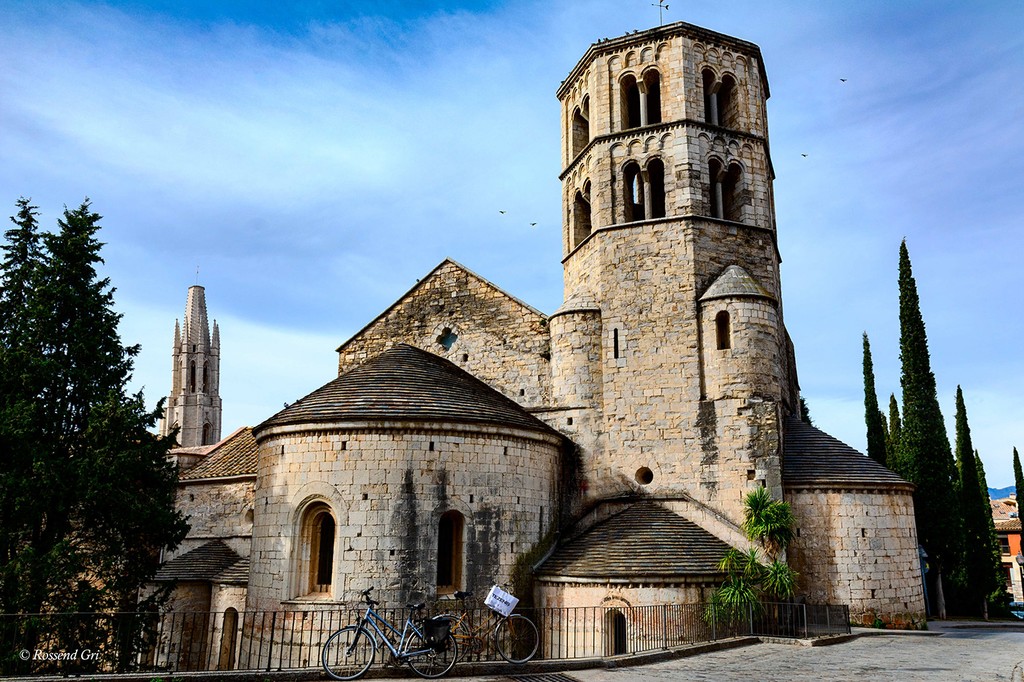
Sant Pere de Galligants (Source: Google Maps)
Sant Pere de Galligants, a former Benedictine monastery, is a significant historical site in Girona that now houses the Archaeological Museum of Catalonia. Founded in the 12th century, this Romanesque-style structure showcases exquisite architectural details, including its iconic bell tower and intricate stone carvings. The monastery once served as a spiritual center for monks and played a vital role in the region's religious life. Today, visitors can explore the museum, which exhibits a vast collection of archaeological artifacts from the region, including Roman, medieval, and prehistoric items. The monastery's tranquil surroundings and historic ambiance make it a perfect spot for reflection and appreciation of Girona's rich cultural heritage. The site also features a beautiful cloister, offering a peaceful retreat and a glimpse into the monastic life of the past, making it an essential stop on any exploration of Girona.
Passeig de la Muralla (City Walls Walk)
Experience breathtaking views of the city by walking along the ancient city walls, which provide a unique perspective on Girona's historical layout.
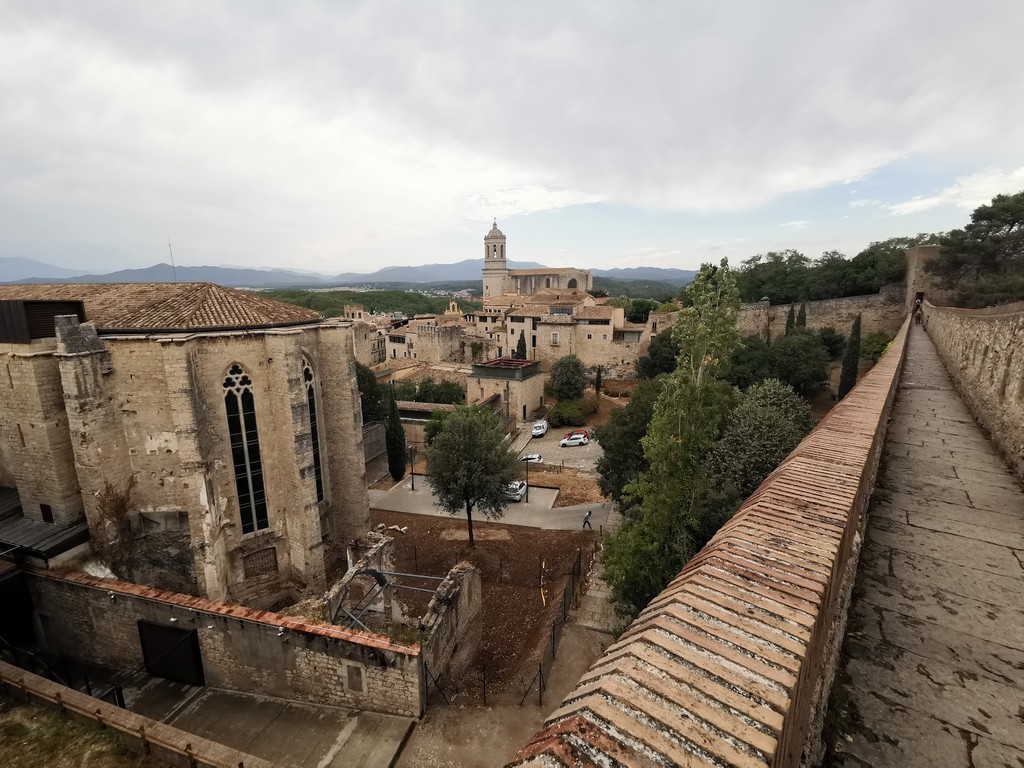
Passeig de la Muralla (City Walls Walk) (Source: Google Maps)
The Passeig de la Muralla, or City Walls Walk, is a remarkable historical feature of Girona, offering breathtaking views of the city and its surroundings. The ancient walls date back to the Roman era and have been expanded and fortified over the centuries, showcasing a mix of architectural styles. As you walk along the walls, you'll encounter towers, battlements, and scenic viewpoints that provide a unique perspective on Girona's historical layout. The walls not only served as a defensive structure but also played a crucial role in shaping the city's development. The walk along the Passeig de la Muralla allows visitors to appreciate the stunning landscape, including the picturesque Onyar River and the vibrant rooftops of the old town. This experience is a journey through time, where the past meets the present, making it an essential part of Girona's historical narrative.
Jewish Quarter (El Call)
Explore the narrow, winding streets of the Jewish Quarter, one of the best-preserved in Europe, offering a glimpse into Girona's medieval past.

Jewish Quarter (El Call) (Source: Google Maps)
The Jewish Quarter, known as El Call, is one of the best-preserved medieval neighborhoods in Europe, offering a fascinating glimpse into Girona's rich Jewish heritage. The narrow, winding streets are lined with historic buildings that reflect the architectural styles of the time, creating a unique atmosphere steeped in history. El Call was once a thriving community for Jewish families, especially during the 12th to 15th centuries, when it flourished as a center of trade and culture. Visitors can explore significant landmarks such as the ancient synagogue and the Jewish History Museum, which provide insights into the lives of the Jewish community and their contributions to Girona's cultural fabric. The quarter's cobblestone streets and charming squares invite leisurely exploration, allowing visitors to absorb the historical significance of this area. El Call is not only a testament to Girona's diverse past but also a symbol of resilience and coexistence.
Plaça de la Independència
Take a break at Plaça de la Independència, a lively square surrounded by restaurants and cafes, ideal for people-watching and enjoying the local atmosphere.
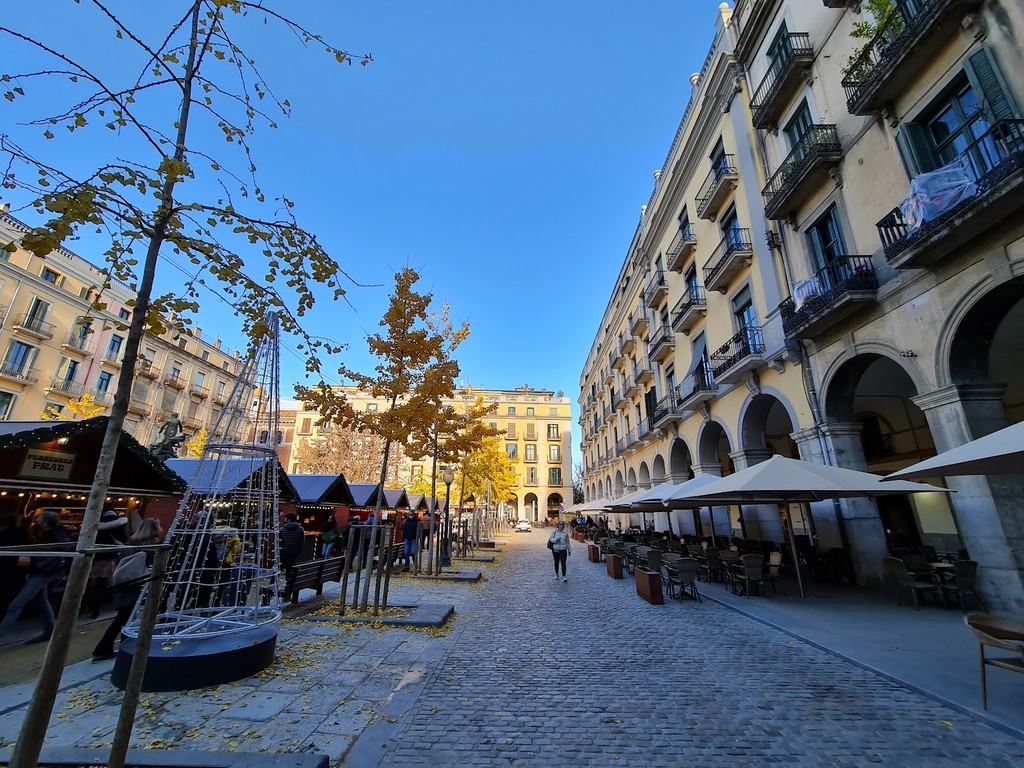
Plaça de la Independència (Source: Google Maps)
Plaça de la Independència is a vibrant square in the heart of Girona, surrounded by an array of restaurants, cafes, and historic buildings. This lively public space is a popular gathering spot for locals and visitors alike, offering a perfect opportunity to soak in the local atmosphere. The square is named in honor of the Catalan independence movement and serves as a testament to the city's rich history and cultural identity. With its bustling ambiance, Plaça de la Independència is ideal for people-watching, enjoying a meal, or sipping coffee while taking in the surroundings. The square is also home to various events and festivals throughout the year, making it a focal point of community life. Its central location makes it a convenient stop during your exploration of Girona, providing a blend of history, culture, and modernity.
Pont de les Peixateries Velles (Eiffel Bridge)
Cross the iconic red iron bridge designed by Gustave Eiffel, offering another great vantage point of the city and the Onyar River.
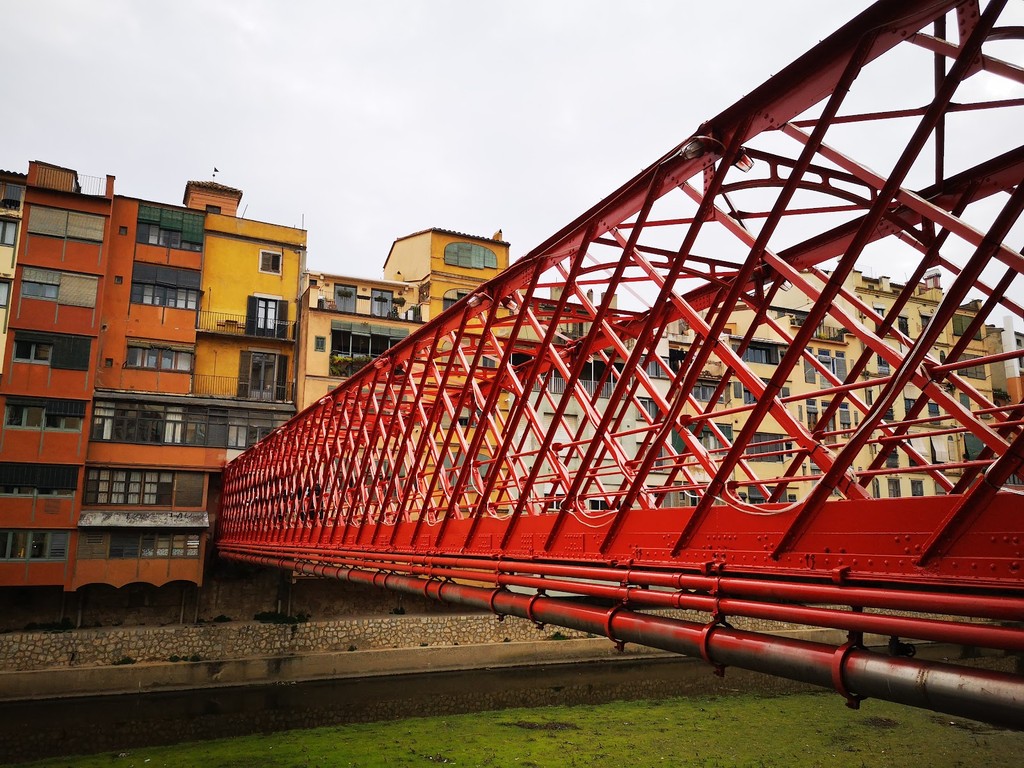
Pont de les Peixateries Velles (Eiffel Bridge) (Source: Google Maps)
The Pont de les Peixateries Velles, commonly known as the Eiffel Bridge, is an iconic red iron bridge designed by the renowned engineer Gustave Eiffel. Completed in 1877, this bridge is a prime example of 19th-century industrial architecture and serves as a vital connection between the two sides of the Onyar River. The bridge's distinctive design features elegant ironwork and vibrant red color, making it a striking landmark in Girona. As you cross the bridge, you can enjoy stunning views of the colorful houses lining the riverbank, a hallmark of Girona's picturesque landscape. The Eiffel Bridge is not only an architectural marvel but also holds historical significance, symbolizing the city's growth and modernization during the industrial era. It serves as a popular spot for photography and offers a unique vantage point to appreciate the beauty of Girona from a different perspective.
Onyar River and its Colorful Houses
Stroll along the Onyar River and admire the iconic colorful houses that line its banks, providing one of Girona's most picturesque views.
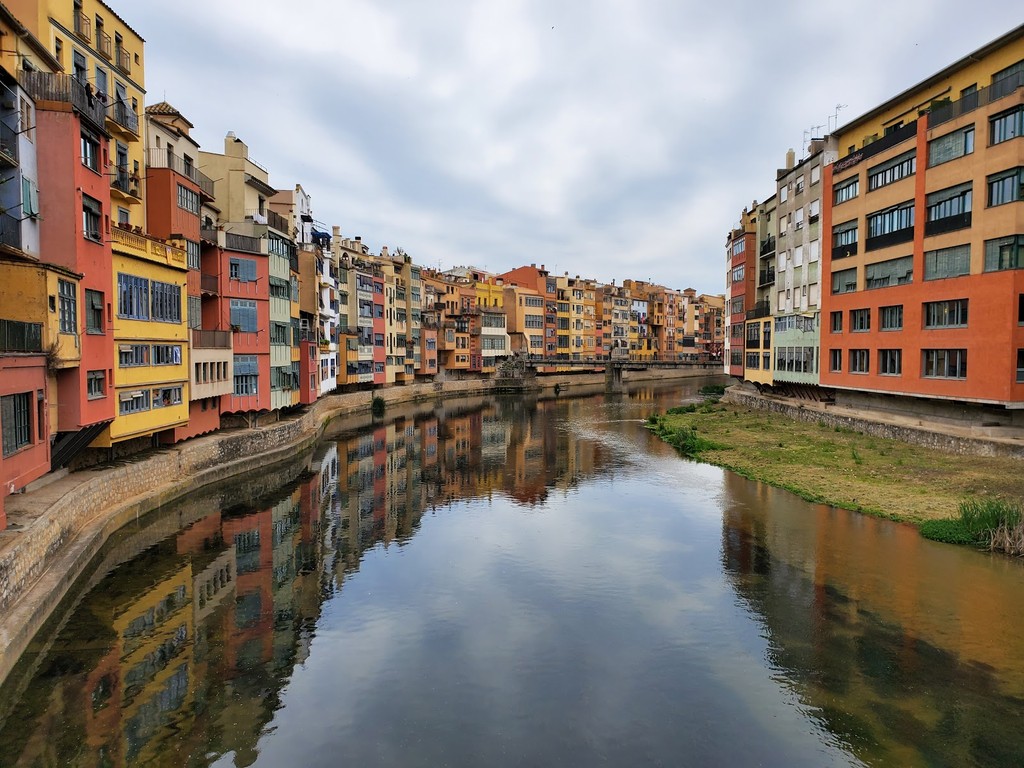
Onyar River and its Colorful Houses (Source: Google Maps)
The Onyar River, winding through the heart of Girona, is famous for its picturesque views, particularly the vibrant houses that line its banks. These colorful façades, painted in shades of yellow, orange, and pink, create a stunning backdrop against the tranquil waters of the river. The houses, many of which date back to the medieval period, reflect Girona's rich architectural heritage and are a symbol of the city's charm. Strolling along the riverbanks provides an opportunity to appreciate the unique blend of history and modernity that characterizes Girona. The Onyar River has played a significant role in the city's development, serving as a vital waterway for trade and transportation throughout history. Today, it is a popular spot for locals and tourists alike, offering scenic walks and beautiful views, especially at sunset when the colors of the houses are illuminated by the golden light.
Rambla de la Llibertat
Conclude your tour at the bustling Rambla de la Llibertat, a lively street lined with shops, cafes, and historic buildings, perfect for a leisurely stroll or a relaxing end to your exploration.
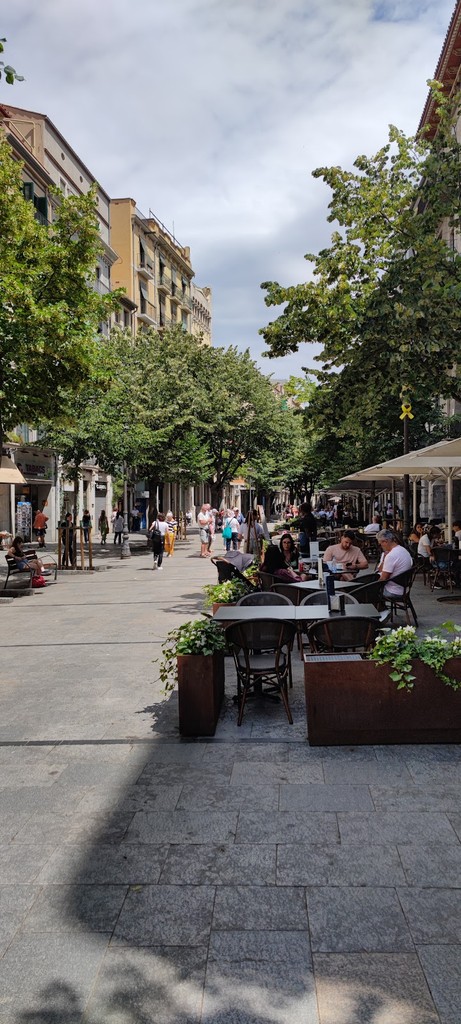
Rambla de la Llibertat (Source: Google Maps)
Rambla de la Llibertat is a bustling street in Girona, known for its vibrant atmosphere and lively ambiance. Lined with shops, cafes, and historic buildings, this lively thoroughfare is a hub of activity and a favorite spot for both locals and visitors. The Rambla serves as a central point for social gatherings, cultural events, and markets, making it a key part of Girona's community life. The street's name, translating to 'Ramble of Freedom,' reflects its significance as a space for expression and interaction. Visitors can enjoy leisurely strolls, indulge in local cuisine at nearby restaurants, or simply relax in one of the many outdoor seating areas while taking in the surroundings. The Rambla de la Llibertat is not only a shopping destination but also a cultural landmark, showcasing the vibrant spirit of Girona and its residents.

Your travels, your rules.
Create your own Free Walking Tours.
Set your preferences, distances and anything you want to do or see.
Completely free, no payment required.